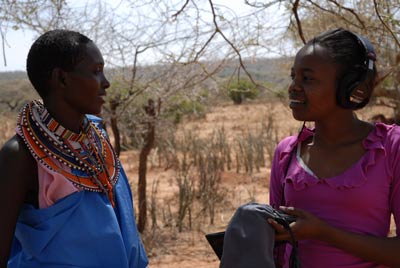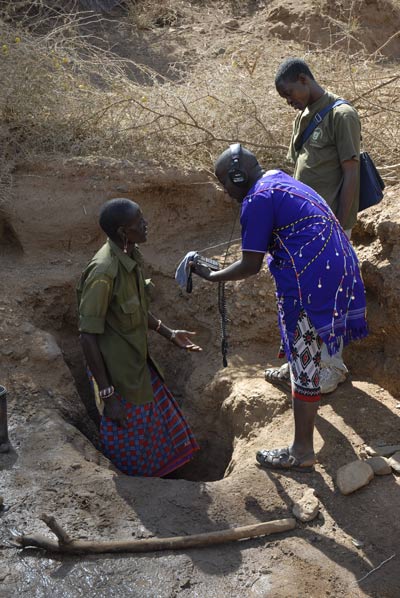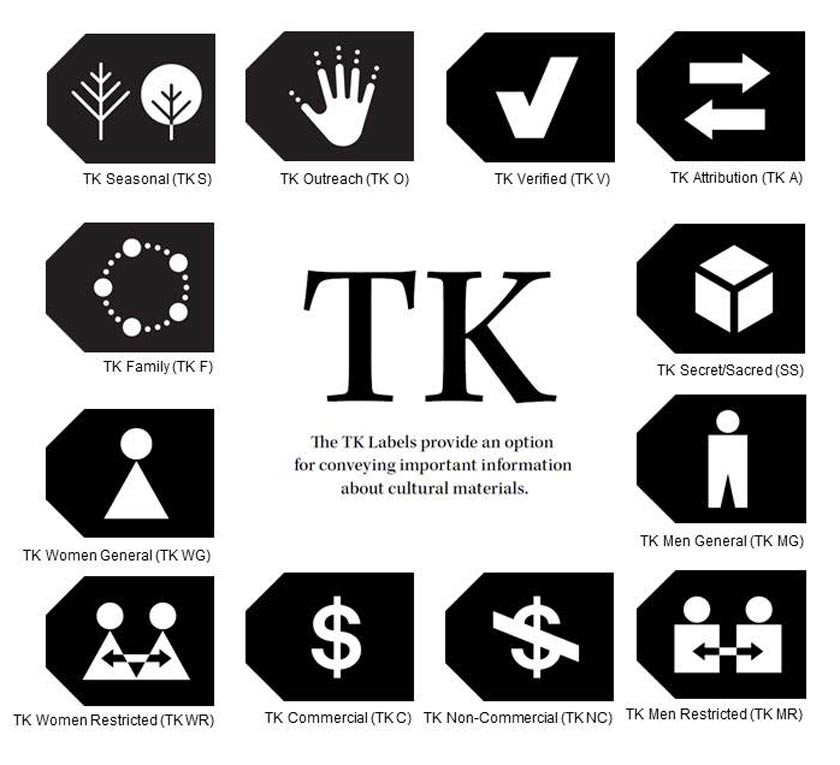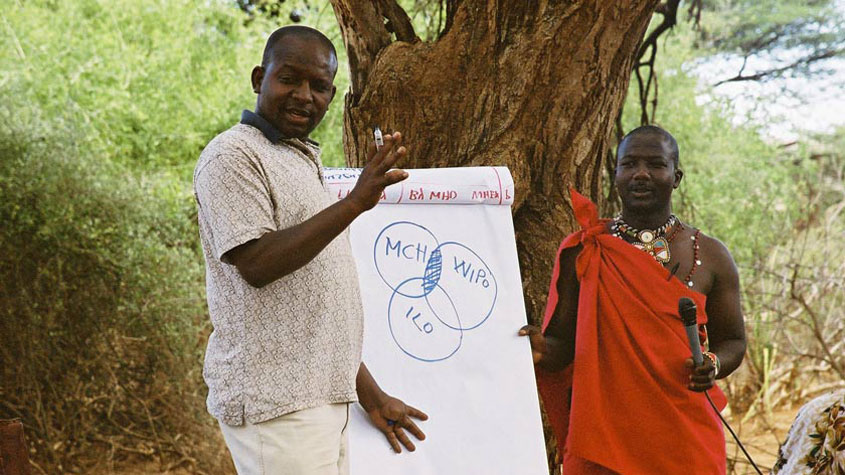
Managing rights in digitized indigenous music
By Wend Wendland, Director, Traditional Knowledge Division, WIPO*
It was beneath the old acacia tree where the community elders meet that Ole Kaunga and Ole Tingoi turned to me back in 2006 with an idea that could help the Maasai people of East Africa open up a modern-day revenue stream. “Let’s build a library of our music and sell it online,” Ole Kaunga said. “Like iTunes.”
Ole Kaunga and Ole Tingoi are members of the Maasai community at Il Ngwesi, Laikipia, Kenya.
And so began an ambitious partnership that seeks to deliver concrete benefits to the community through recording, archiving and commercializing Maasai music and other cultural expressions.
This groundbreaking project lies at the crossroads of heritage preservation, self-determination, rural development, community entrepreneurship, promotion of creativity and bridging the digital divide.
The United Nations has even made a film about it.
Putting indigenous and local communities in the driving seat

hands-on training the documentary techniques and archival skills
needed to undertake effective community-based cultural conservation
(photo: Courtesy of the American Folklife Center, Library of Congress;
photo by Guha Shankar).
The project recognizes both the benefits and dangers of new technology for indigenous and local communities. While new technologies can preserve and disseminate indigenous heritage like never before, it is critically important that communities themselves are empowered to make informed decisions about how to manage resulting intellectual property (IP) rights in line with their cultural values and development goals.
That is why this pilot project is seeking to put indigenous and local communities in the driving seat. The project is being rolled out by WIPO in partnership with the American Folklife Centre at the Library of Congress, Washington, D.C., and the Center for Documentary Studies at Duke University, North Carolina, United States. As the project launched, the National Museums of Kenya also lent a valuable helping hand.
The central idea is for the Maasai to shift from being the objects of study to the producers of their own documentary archive, and as such, owners of the rights in those new recordings.
John Ole Tingoi and Anne Tome of Il Ngwesi, who were selected by the community for their interest and aptitude, received hands-on training in the documentary techniques and archival skills needed to undertake effective community-based cultural conservation. WIPO provided the community with IP training to enable them to manage their IP rights plus a basic kit of cameras, sound recorders, computers and software to get the project off the ground.
Supporting rights management

photo by Guha Shankar
The project’s overriding aim is to ensure the Maasai themselves are in a position to manage the IP information relating to each of their recordings. IP rights management is therefore a critical component of the project. This includes identifying who the rights holders are and how these works may be used in line with customary laws and practices.
Rights management is as relevant to the archiving of recordings for conservation purposes as it is to their dissemination and commercialization. Beyond the Maasai pilot project, various other initiatives have sought to develop practical and user-friendly ways for rights holders to manage their rights. Two in particular merit closer consideration.
Local Contexts: communicating with labels
The Local Contexts project offers indigenous communities various “labels” which they can attach to digital recordings of their cultural materials. Under the conventional IP system, these materials are typically considered part of the public domain and, as such, free to use.
The 13 labels currently available through Local Contexts convey important information about the meaning and status of cultural materials to potential users. By labeling their materials, communities can suggest rules of access and use which are often based on customary laws and practices, giving users of the materials a clear idea what is expected of them in terms of how they use and attribute the material.
This approach is especially valuable when it comes to the use of sacred and/or ceremonial material. For example, the Traditional Knowledge Community Use Only Label signifies that the material in question is usually not publicly available, and embodies a request that users think carefully about if and how they are going to use it.
In many instances, when cultural heritage information is collected, a great deal of it is incorrectly recorded or omitted altogether. In response to this problem, the Traditional Knowledge Attribution Label puts a community’s name back into the archival and historical record and asks users to do the same. The label also reconnects historical material with contemporary communities and connects users with these communities.

Similarly, the Traditional Knowledge Commercial Label indicates that material may be used commercially but requests that users respect community protocols. Designed to discourage derogatory use, the label encourages dialogue between the user and the source community.
Clearly, these labels are not “binding”, but, as the founders of the initiative, Jane Anderson and Kim Christen Withey, explain, “they appeal to the better instincts of users of indigenous cultural materials to create and share them responsibly and respectfully.”
The Local Contexts labeling system is designed precisely for communities like the Maasai. Originally developed to support the Mukurtu Project in Central Australia, the labels are now being tested with First Nation and Native American communities in Canada and the United States. The American Folklife Center at the Library of Congress will be one of the first institutions to incorporate the Labels into its catalogue and digital displays through its work with the Passamaquoddy Nation in Maine on labeling and digitizing a collection of 1890s sound recordings.
The Copyright Hub: making licensing easier
A second initiative that can support indigenous and local communities in the management of their IP rights is The Copyright Hub (see UK's Copyright Hub: a license to create, a WIPO Magazine article).
In the digital environment, creative content is easy to find but frequently separated from its owners and any IP rights-related information. Often we have little or no knowledge of the rights that attach to different materials, or to whom they belong. This stifles sharing, reuse and creativity.
The Copyright Hub, a free-to-use technology platform, addresses this problem by making it easier to license copyrighted and free materials in the digital environment. It does this by attaching identifiers to works, allowing those who want to use the content – intermediaries and owners (or their computers) – to find each other and conclude online licensing agreements in just a few clicks. With the Copyright Hub permissions are handled automatically and are hassle-free. The Copyright Hub’s user-friendly approach promises to unlock troves of creative content from around the world.
Although digitized indigenous materials throw up some unusual rights issues from the perspective of conventional copyright, if platforms like the Copyright Hub were to reach out to indigenous and local communities in developing countries, the platforms could accelerate their own global uptake.

What next for the Maasai pilot project?
Back in Il Ngwesi, which lies six hours by jeep along a red-brown rutted road from the nearest metropolitan center in northern Kenya, the project faces several challenges – conceptual, political, legal and logistical, to name a few.
The project is situated within a broader landscape of rural poverty, environmental degradation, climate change, community displacement and land loss, and these factors are putting a brake on the community’s brave efforts. In spite of these challenges, the Maasai community at Il Ngwesi is continuing to make recordings and is slowly but surely building up a library of their cultural expressions.
But more investment in time, energy and resources is needed for the community’s vision to come to fruition.
Opportunities for community-led development
A wealth of knowledge is embedded in indigenous cultures – knowledge that can foster creativity and generate tangible community-led economic development. Creativity within indigenous and local communities around the world is dynamic and abundant. And in an increasingly uniform world, there are significant income-generating opportunities for these communities as consumers seek fresh sounds and designs that are authentic and distinct.
More practical work along the lines of the Maasai project, as a complement to longer-term policy initiatives aimed at revising current IP law, might offer communities concrete and measurable benefits in the shorter term.
But new investment and revitalized commitment are needed if those benefits are to be realized. We need to think clearly about what forms of practical assistance communities need, and how other communities can learn and gain from the Maasai experience.
The Il Ngwesi community has already amassed close to 150 video recordings and over 200 photographs, and has ambitious yet sensible plans for editing, archiving, using and sharing this material.
The Maasai project could serve as a pilot for designing sustainable models that safeguard the richness of indigenous cultures, foster creativity and generate tangible community-level economic development.
Thanks to Jane Anderson, Jens Bammel, Caroline Boyd, Ole Kaunga, Kiprop Lagat, Guha Shankar and Ole Tingoi for having commented on and improved earlier versions of this article.
*This article is written in the author’s personal capacity and does not necessarily represent the views of WIPO or any of its member states.
The WIPO Magazine is intended to help broaden public understanding of intellectual property and of WIPO’s work, and is not an official document of WIPO. The designations employed and the presentation of material throughout this publication do not imply the expression of any opinion whatsoever on the part of WIPO concerning the legal status of any country, territory or area or of its authorities, or concerning the delimitation of its frontiers or boundaries. This publication is not intended to reflect the views of the Member States or the WIPO Secretariat. The mention of specific companies or products of manufacturers does not imply that they are endorsed or recommended by WIPO in preference to others of a similar nature that are not mentioned.